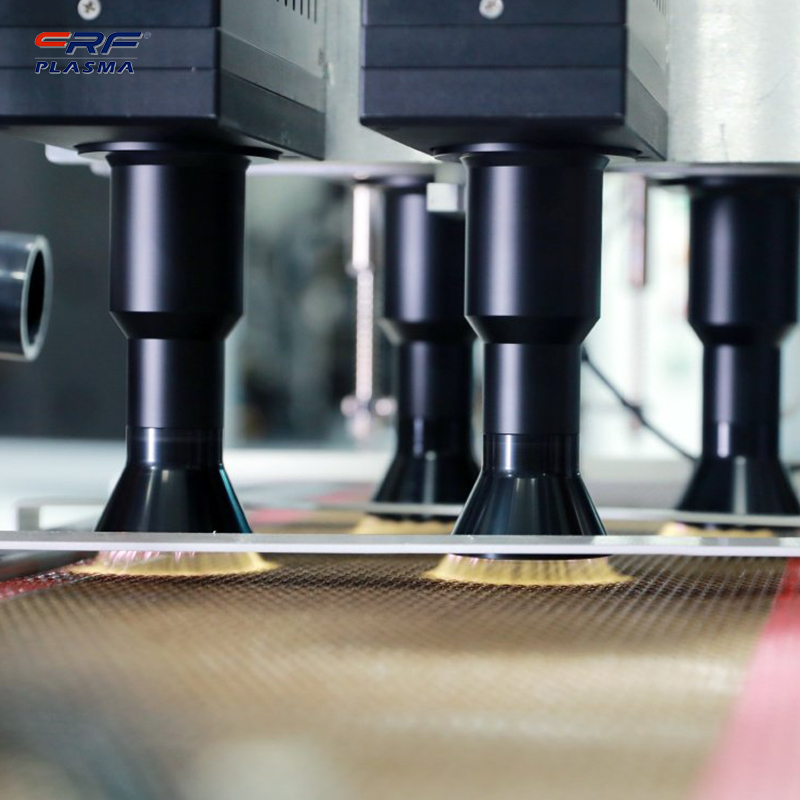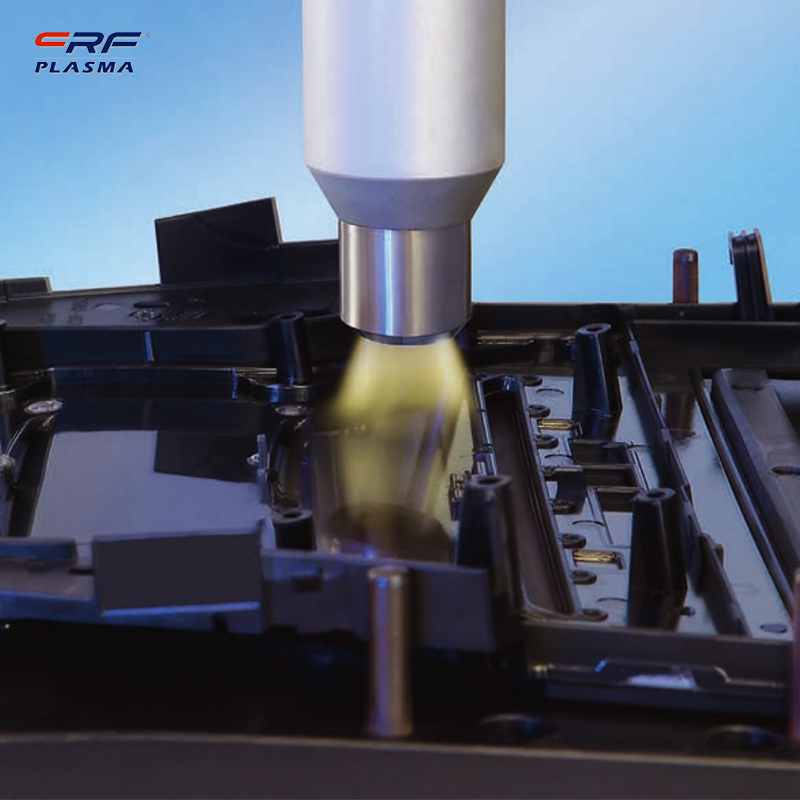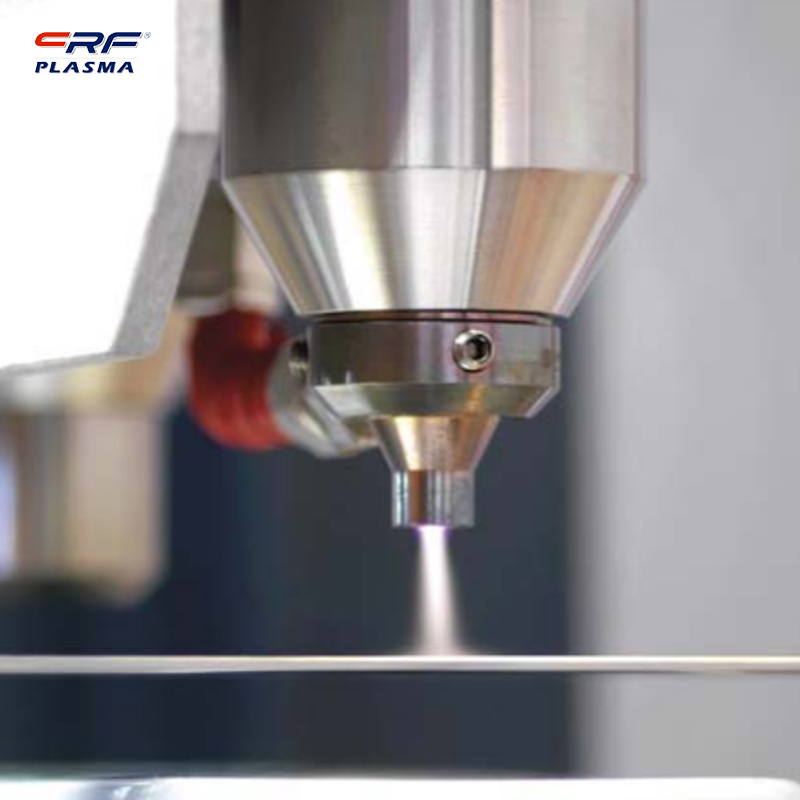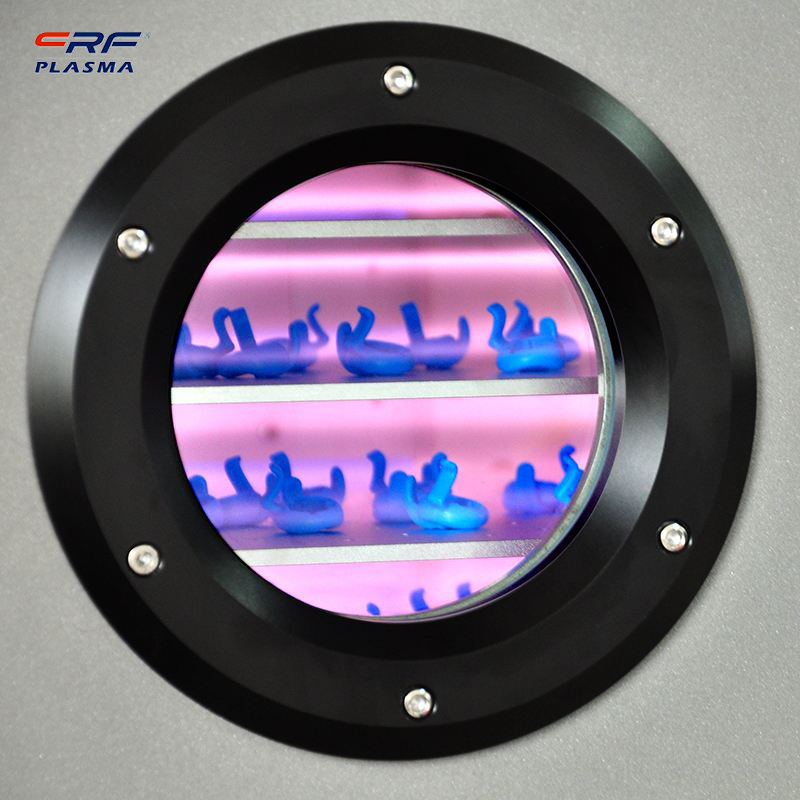
Welcome to Shenzhen Sing Fung Intelligent Manufacturing Co., Ltd.
E-mail:shaobo@sfi-crf.com
News
Low-temperature plasma technology to solve the use of three methods environmental engineering wastewater
The use of low-temperature plasma technology to treat environmental engineering wastewater can achieve a better treatment effect under the joint action of high-energy electron radiation, ozone oxidation, ultraviolet decomposition and other methods.
High-energy electron action.
Low-temperature plasma technology generates a large number of high-energy electrons in the wastewater treatment process, which convert energy into internal energy of the substrate molecules through collisions with atoms and molecules in the wastewater, and active the wastewater through several processes such as excitation, decomposition and ionization.
New compounds are formed by breaking down the molecular bonds in the wastewater and reacting with active factors such as free oxygen and ozone. Finally, Z eventually converts toxic substances into non-toxic substances and degrades pollutants in the raw wastewater.
Ozone oxidation.
In the process of wastewater treatment, ozone acts as a strong oxidizing agent to chemically combine harmful substances and form certain intermediate products, which reduces the toxicity and harmful substances of the original sewage, and after several reflections, eventually decomposes the organic substances of the polluted substances into carbon dioxide and water. For inorganic substances, certain oxides can be formed for removal.
Ultraviolet decomposition effect.
Using low-temperature plasma technology, UV irradiation can decompose harmful substances alone, or jointly with ozone. Separate decomposition effect is mainly harmful molecular substances by absorbing photons into the excited state, through the absorption of energy to break the molecular bonds of molecules, and then react with the free substances in the water to generate new compounds released.
Oxidation by UV light and ozone can treat difficult to degrade substances simultaneously with better effect. Refractory organic substances and pesticides can be broken down quickly.


Now plasma technology for fiber surface modification is also widely noticed
Since the 21st century, with the rapid development of science and technology and modern industry, new materials of various functions have emerged to meet the development needs of various industries. At the same time, this has also led to the development and advancement of various surface modification technologies.
Plasma surface modification refers to the activation modification by exposing the material to a non-polymerized gas plasma and bombarding the material surface with plasma to cause changes in the material surface structure. Generally, the surface modification of the functional layer is very thin (a few nanometers to hundreds of nanometers) and does not affect the overall performance of the material; after modification, the material surface can be hydrophilic, anti-abrasive, decorative, coloring, printing, adhesive, antistatic, etc.
Now plasma technology for fiber surface modification is also widely noted. Plasma treatment of carbon fiber surface can improve the adhesion and ensure that the fiber tensile strength does not decrease. In addition, plasma treatment can also eliminate surface micro-cracks of carbon fibers, reduce stress concentration and improve the tensile strength of the fibers themselves. Plasma treatment of Kevlar fiber, aramid fiber is also effective. PET fiber is widely used, but the dyeing, moisture absorption, anti-fouling properties are poor, after plasma treatment, the introduction of polar groups on the surface, the generation of free radicals, cross-linking layer, effectively improve a variety of properties.
Electronic components, automotive parts and other industrial components in the production process due to cross contamination, natural oxidation, solder, etc., the surface will form a variety of dirt, these pollutants will affect the quality of the components in the subsequent production of welding, bonding and other related processes, reducing the reliability of the finished product and pass rate. Plasma treatment treats the surface of the workpiece by chemical or physical action, and the reaction gas ionizes to produce highly reactive reaction ions that react chemically with the surface contaminants for cleaning. The choice of reaction gas needs to be based on the chemical composition of the contaminant. Chemical reaction-based plasma cleaning speed, good selectivity, better cleaning effect on organic pollutants. Surface reaction to the physical role of the main plasma cleaning is very commonly used is the use of argon, will not produce oxidation by-products, etching effect isotropic. In general the plasma surface modification process, the chemical reaction and physical action is co-existing, resulting in a better selectivity, uniformity and directionality.
Due to the development direction of precision and miniaturization in the industrial field, plasma surface modification technology with its fine and clean, non-destructive modification advantages in the semiconductor industry, chip industry, aerospace and other high-tech industries will also have increasingly important application value.


Principle of the use of the major functional properties of plasma in different industries
Low temperature plasma + photocatalysis technology refers to filling the plasma reactor with TiO2 catalysts. When the high energy particles generated by the reactor decompose organic pollutants into small molecules, these substances are further oxidized and decomposed into inorganic small molecules under the action of catalysts to purify and separate the exhaust gases. The photocatalyst and the plasma discharge interact with each other, the catalyst can change the nature of the plasma discharge to produce new active substances with stronger oxidation; while the plasma discharge will affect the chemical composition, specific surface area and catalytic structure of the catalyst to improve its catalytic activity, which greatly enhances the efficiency of low temperature plasma + photocatalytic technology to purify VOCs. The combined technology is more suitable for treating organic waste gas with large air volume and low concentration, and has the advantages of low operating cost, fast reaction rate and no secondary pollution.
Plasma surface modification uses high-energy active particles in the plasma to bombard the surface of the material, giving it new surface properties, as only the surface is acted on, the original physical properties of the material remain unchanged. It should be noted that plasma has no requirements for substrate materials and can be used for both surface modification of metallic materials and insulating materials.
Plasma cleaning is the process of cleaning a product to improve its ability to print or bond. The purpose of plasma cleaning is to remove organic surface contaminants. Plasma treats the surface of your product to accept the printed adhesive or ink. Often on PTFE or plastics, plasma surface modification actually changes the surface of the material, leaving free radicals and causing it to bond to the adhesive or ink
When the plasma interacts with the surface of the object to be cleaned, on the one hand, the use of plasma or plasma-activated chemically active substances and the material surface dirt for chemical reactions, such as the use of active oxygen in the plasma and the material surface of organic matter for oxidation reaction. The plasma acts with the organic dirt on the material surface and decomposes the organic dirt into carbon dioxide, water, etc. for discharge.
In the use of plasma for material modification or cleaning, usually use low-temperature plasma, gas temperature is not more than 100 °, which is macroscopic; but from a microscopic point of view, when the plasma and the material surface chemical or physical reaction, if the energy gathered in a local area, once the material treatment time is too long, it may cause damage to some material surface.
Plasma etching technology for fiber structure analysis is the earliest application of plasma treatment in the textile industry, and has become a mature technology, another application for the study of textile material modification, surface modification of textile materials with plasma, graft polymerization and plasma polymerization deposition, etc., to change the surface of textile materials (hydrophobic), increase the adhesion, improve the printing and dyeing properties.


Study of plasma working environment on improving the hydrophilicity of PITFE material surface
Study of plasma working environment on improving the hydrophilicity of PITFE material surface:
Polytetrafluoroethylene (PIFE) has been widely used in industrial applications because of its unique properties such as excellent chemical stability, dielectric properties, very low coefficient of dynamic friction, better machinability and flame retardancy. Diaphragm paper, also known as polyethylene (PE) film, its role in lithium-ion batteries is to isolate the positive and negative materials, and the quality of the diaphragm paper directly affects the safety performance and capacity of the battery, so the choice of high-quality diaphragm paper has been a must for battery manufacturers. Biocompatible silicone rubber and polyester as a new thermoplastic engineering plastics have a wide range of uses, but due to the poor surface wettability of such polymer materials and other defects, limiting its application in the medical, health and other special industrial technology fields.
Most of the surfaces of new polymeric materials are hydrophobic, which limits their adhesive and other applications. Plasma surface modification is a very forward-looking method to optimize the structure and properties of the material surface by plasma. The main methods of surface activation are chemical etching, optical radiation, plasma treatment, ion implantation, and surface graft polymerization. Plasma surface modification is to optimize the structure of the material surface by discharging plasma, which has become a common material surface modification method in industry because of its specific environmental and cost advantages. pife, pe, silicone rubber polyester, strip-like samples, can be treated with continuous drive plasma. When the power is the same, the modification effect of plasma is Ar+H, N2, O2 in descending order. increasing the power is instead detrimental to the improvement of surface hydrophilicity of PIFE samples, which is due to the fact that at high power, there are significantly more high-energy particles in the plasma, which strengthen the impact on the material surface and can make some reactive groups on the surface inactive, thus reducing the introduction of reactive groups.
The pressure has no significant effect on the contact angle when the discharge voltage is stronger than 10 Pa as well as less than 50 Pa. However, when the air pressure is greater than 50 Pa, the contact angle increases instead, which may be due to the high air pressure that makes it difficult for the gas to be completely ionized, thus affecting the modification of the PTFE surface. Plasma gives the material new surface properties, but the effect of plasma surface treatment has the problem of timeliness, with the placement time and show certain changes, with the extension of time, the surface contact angle will gradually increase. The reason for the decay of the time-dependent wettability of the plasma-treated but ungrafted surface may be multifaceted, which may be due to the failure of the newly introduced hydrophilic groups to dive into the surface of the material after a period of time; it may also be due to the cross-linking chemical reactions on the surface, thus decreasing the hydrophilicity of the material surface. Therefore, in order to prevent the failure of the plasma-treated surface, grafting and bonding must be carried out within a specified period of time to maintain and make full use of the modification effect.
Plasma contains a large number of electrons, ions, excited atoms, molecules and radicals and other reactive particles, these reactive particles and polymer materials interact to oxidation, reduction, cleavage, cross-linking and polymerization of various physical and chemical reactions on the surface of the material, thus optimizing the surface properties of the material, increasing the surface hygroscopicity (or hydrophobicity), dyeability, adhesion, antistatic properties and bio compatibility, etc. Plasma achieves surface modification of polymers such as polytetrafluoroethylene, PE battery separators, silicone rubber, and polyesters. Plasma working conditions have a significant effect on improving the hydrophilicity of PITFE material surfaces. Plasma treatment introduces a large number of polar groups on the surface of the material, which is responsible for the improvement of its hydrophilicity.
Translated with www.DeepL.com/Translator (free version)


How plasma etching of LDPE films is described today
How plasma etching of LDPE films is described today
Plasma modification has the following main advantages.
① It is a dry process, which meets the current demand for energy saving and environmental protection.
②No special requirements for the material to be treated, which has universal applicability.
③ Short processing time, only a few seconds to a few minutes.
④Only the surface layer of the material is modified, and no damage is caused to the substrate itself. Therefore, plasma technology has a better application effect compared with traditional modification technology. Plasma is a non-condensed system produced by complete or partial ionization of the gaseous state, the so-called "ionization" means that at least one electron is separated from the atom or molecule, so that the atom or molecule is converted into a positively charged ion. This system includes atoms, molecules, ions in excited and sub-stable states, etc. The system has an equal number of positive and negative charges inside and is electrically neutral on a macroscopic scale. The application of plasma technology is particularly significant in materials science, where new materials are developed by modifying their surfaces through plasma technology in order to achieve higher performance, which is an important tool in the current development of new materials. Plasma modifies the surface of a material, usually by impacting the surface of the material and breaking the original chemical bonds to form new ones. Most of the ion energies in plasma, except ions, are higher than the bonding energy of chemical bonds. This indicates that plasma can break the chemical bonds on the material surface and form new bonds.
Plasma treatment for surface modification is to expose the material to the plasma of non-polymeric gas and bombard the surface of the material by the plasma to cause changes in the polymer structure, thus achieving the purpose of surface modification of polymer materials.
Plasma treatment is mainly for inert gases. Organic polymer materials are treated with oxygen, nitrogen, hydrogen, argon and other non-polymeric inorganic gases in contact with air, which introduce functional groups on the surface and form cross-linked structural layers or generate free radicals. In general, the surface hydrophilicity is substantially increased after plasma treatment of the surface.
The crystallinity and timeliness of PET films after surface modification were investigated. The water contact angle of the films decreases with increasing energy density after treatment under dielectric blocking discharge conditions, and the highest crystallinity is biaxially stretched with the smallest contact angle of PET films. The air plasma had the most significant etching effect on the LDPE films and therefore the most prominent change in surface morphology, and the peel strength after bonding was significantly higher compared to that before treatment under optimal conditions. This is due to the interaction of the reactive groups generated by the air plasma with the LDPE surface phase thus increasing the reactive particles and attracting oxygen-containing groups. In addition, due to the time-sensitive nature of plasma treatment, the treatment should be immediately followed by the next process.
After the plasma jet treatment of PTFE, the hydrophilic properties of the material surface are enhanced. From SEM pictures, it was found that the treated PTFE surface produced dense micron-sized particles, which led to an increase in surface roughness, and these particles increased in density as well as roughness with increasing treatment time. This is due to the breakage of the C-F bond on the PTFE surface to introduce oxygen-containing groups.
After plasma modification treatment, the hydrophilicity and surface roughness of the material surface were greatly increased and showed a linear increase with the working pressure. The increased nitrogen content after plasma treatment improves the biocompatibility of the polycarbonate.
Translated with www.DeepL.com/Translator (free version)


plasma cleaning machine-surface treatment equipment-CRF plasma machine-Sing Fung Intelligent Manufacturing
According to the temperature of heavy particles in plasma, plasma can be divided into two categories, hot plasma and cold plasma. At 3×103K-3×104K, the thermodynamic equilibrium is basically reached, with a uniform thermodynamic equilibrium temperature, and the plasma state and the plasma state can be determined by Maxwell's thermodynamic equilibrium velocity distribution, Boltzmann particle energy distribution, Shaha equation and other methods. parameter. Thermal plasma has high energy density and is mainly used for material synthesis, spheroidization, densification and coating protection.
In low temperature plasma, the temperature of heavy particles is only room temperature, while the temperature of electrons can reach thousands of degrees, so it is far away from the thermodynamic equilibrium state, such as glow discharge belongs to low temperature plasma. Cold plasma is mainly used for plasma etching, deposition and plasma surface decoration. The temperature of electric washing is a concern of many users. During electric washing, the flame of electric washing looks similar to the general flame. However, if the electric washing equipment adopts an intermediate frequency power supply, it has high power and strong energy, and the temperature without water cooling is also very high. If the washing material is not temperature resistant, pay attention to the temperature.
The power supply of the plasma cleaning machine is commonly used 13.56KHz radio frequency power supply, which produces high plasma density, soft energy, and low temperature. , the intermediate frequency power is 40KHz, contrary to the radio frequency power supply, the plasma density is not high, but the power is large, the energy is high, and the high power is tens of KW. The temperature of the vacuum plasma cleaner discharge RF cleaner is similar to the usual indoor temperature. Of course, if the vacuum plasma cleaner is used all day, it still needs to add water to the cooling system.
The average temperature of the plasma jet is between 200 and 250 degrees Celsius. If the distance and speed can be set correctly, the surface temperature can reach 70-80℃. This process is suitable for cleaning various standard products (metals, ceramics, glass, plastics, elastomers, etc.). Generally, a jet plasma cleaning device is used, and it can also be applied to a plasma cleaning device on an assembly line. Due to the continuous operation of the assembly line , the material stays under the nozzle for a long time. Nitrogen can also be used for some jet plasma cleaning due to its ability to lower the plasma temperature. It should be noted that there is another product in the plasma cleaning machine called corona. In fact, corona is also a classification of plasma cleaning machines. The washing temperature of the corona machine is generally higher, and the washing temperature of the corona machine is similar to that of the jet plasma. Sometimes materials that are not resistant to high temperature are also cleaned with nitrogen. In fact, there is no need to worry too much about temperature. The current plasma cleaning machine can adjust the temperature well, so that the material cleaning can achieve the desired effect


Previous page
1
2
…
132
Next page

TEL:0755-3367 3020 / 0755-3367 3019

E-mail:sales-sfi@sfi-crf.com

ADD:Mabao Industrial Zone, Huangpu, Baoan District, Shenzhen











